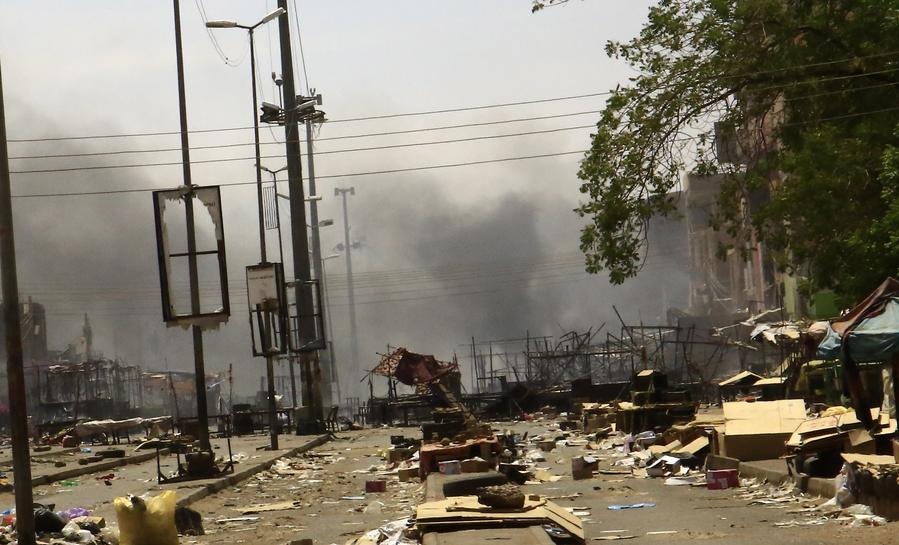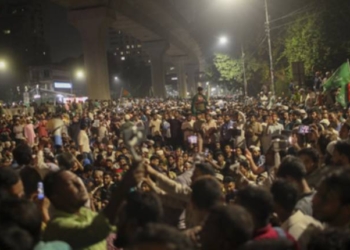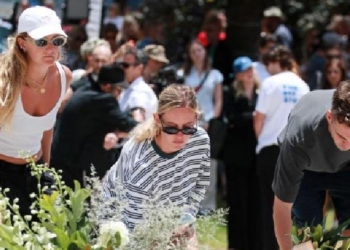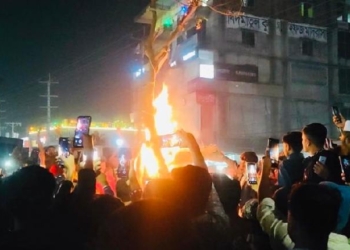Khartoum: As the world observed International Museum Day, officials and experts reported that Sudan’s museums and archaeological sites have suffered widespread looting and destruction due to the ongoing civil war.
“Sudan now stands on the brink of losing its history, as its museums and cultural heritage have been deliberately looted and its antiquities illegally sold,” Ghalia Jar Al-Nabi, director of Sudan’s National Corporation for Antiquities and Museums, told Xinhua.
She revealed that about 70 per cent of the artifacts from the Sudan National Museum, which housed over 100,000 items spanning all historical eras since the Stone Age, have been lost, including gold and jewelry belonging to the kings and queens of Napata, the capital of the ancient Kingdom of Kush from approximately 750 to 590 BC, in what is now modern-day Sudan.
She noted that seven government-run museums had been looted and destroyed, three of them in the capital Khartoum, including the Sudan National Museum, the Khalifa House Museum, and the Ethnographic Museum, along with three in the Darfur region and one in Gezira State.
“These museums contained vast numbers of rare artefacts representing every period in Sudan’s history,” she added, noting that she had seen photographs of smuggled artefacts listed for sale on eBay after they had been transported out of the country by trucks.
In addition to government-run institutions, several specialised museums, including the Military Museum in Khartoum, were also targeted for destruction, looting, and theft, according to Omar Al-Nour, director of the General Administration of Exhibitions and Military History and director of the Military Museum.
“This museum served as the cultural memory of the military institution and included historical military artefacts, old aircraft, tanks, and weapons,” he added.
As early as September 2024, the United Nations Educational, Scientific and Cultural Organisation (UNESCO) warned that the looting of museums, archaeological sites, and artefacts posed a serious threat to Sudan’s cultural heritage.
Recently, the Sudanese government announced it had sought the assistance from UNESCO and the International Criminal Police Organisation to recover stolen artefacts and had formed an international team of archaeologists to track down the looted items, Sudan’s Minister of Information and government spokesperson, Khalid Ali Aleisir, told Xinhua in a recent interview.
“We have a solid plan and measures in place, in partnership with UNESCO, to track the looted artefacts and retrieve them,” he said.
Meanwhile, Sudan’s archaeological cities have not been spared by the war. Some have witnessed direct armed clashes, while others have suffered from the wider fallout of the conflict.
The ancient city of Naqa, located in the River Nile State in northern Sudan, became a battleground between the Sudanese Armed Forces (SAF) and the paramilitary Rapid Support Forces (RSF), who infiltrated the archaeological site.
“The archaeological site of Naqa is regarded as one of the most important historical locations in Sudan and is listed as a World Heritage Site,” said Abdalla Abdul-Khaliq, a researcher in Sudanese heritage.
“The site contains statues, ruins, and shrines from the Meroitic era (about 300 BC — 400 AD). Although there are no official figures on the damage, the presence of armed clashes in such a sensitive archaeological area is undoubtedly a direct threat,” he added.
Although the ancient city of Suakin in eastern Sudan has not been directly affected by the war, restoration work on its historic buildings, led by the Turkish Cooperation and Coordination Agency, has stalled as the government focuses on urgent wartime priorities.
“The restoration of Suakin’s heritage buildings was supposed to be completed earlier, but the war has slowed down the process,” said Ibrahim Shungarai, a member of Suakin’s native administration and a tour guide in the ancient city, Xinhua news agency reported.
Located on Sudan’s Red Sea coast, about 780 kilometres from Khartoum, Suakin is home to many historical landmarks, including the El-Shenawy Palace, a massive building made of coral stone, clay, and sea sand, with more than 360 rooms, as well as the Customs Building, the Hanafi and Shafi Mosques.
Sudan has been embroiled in a devastating conflict between the SAF and the RSF since mid-April 2023, which has claimed tens of thousands of lives and displaced millions of people both inside and outside the country.
(IANS)
















